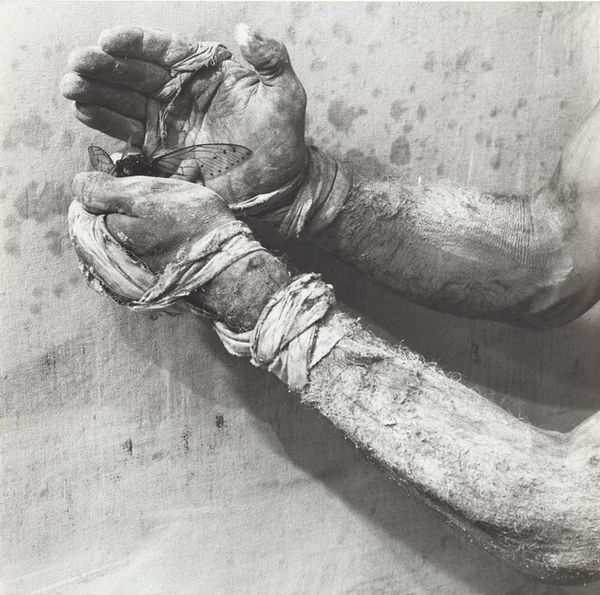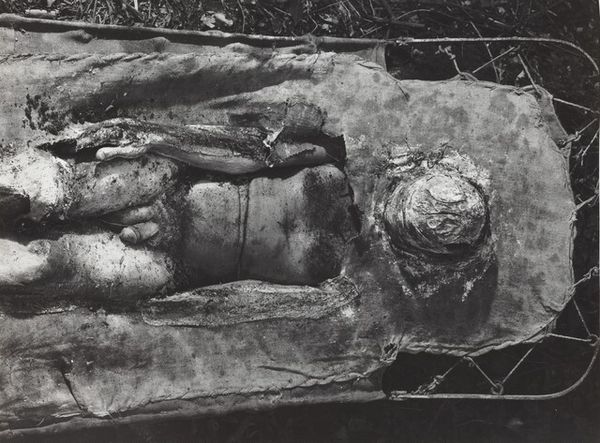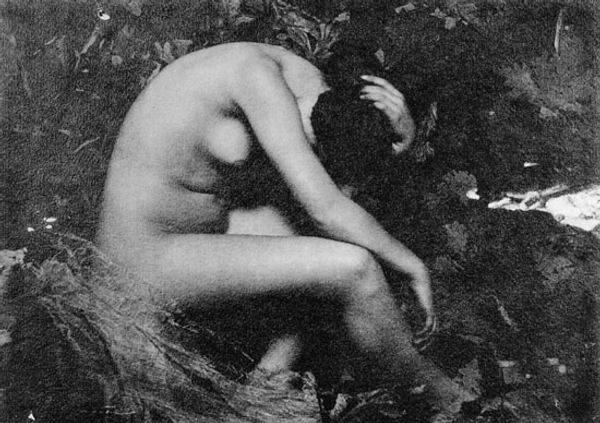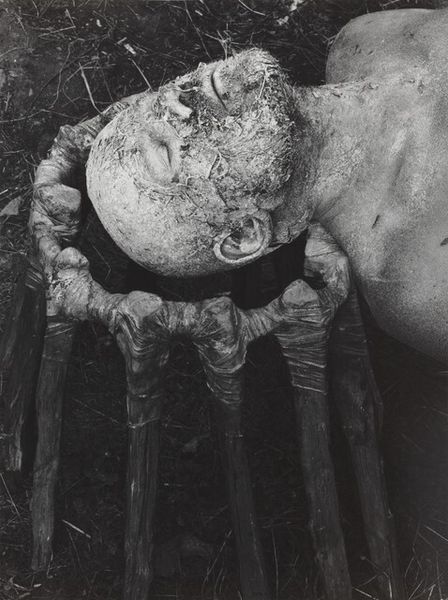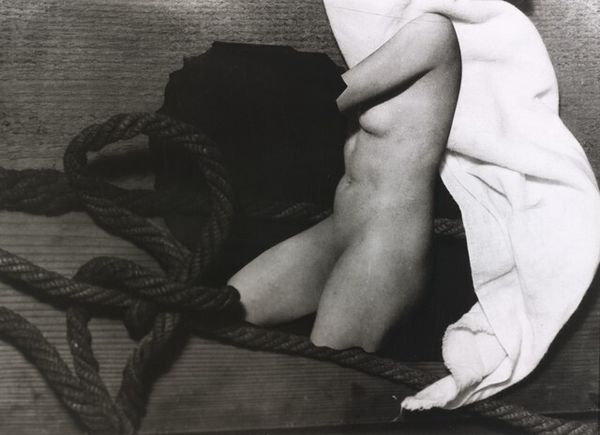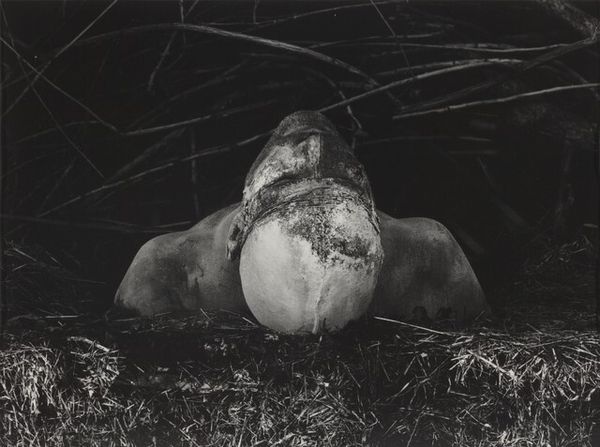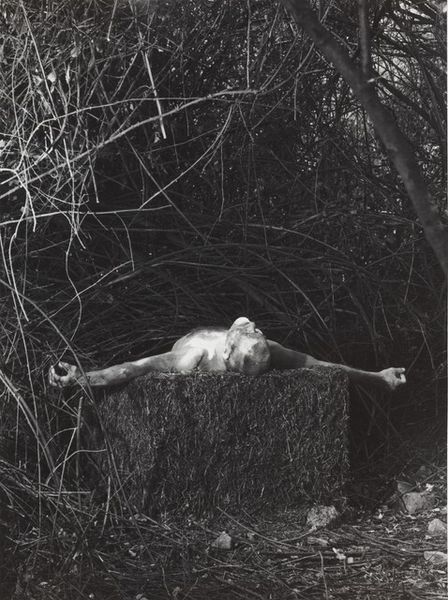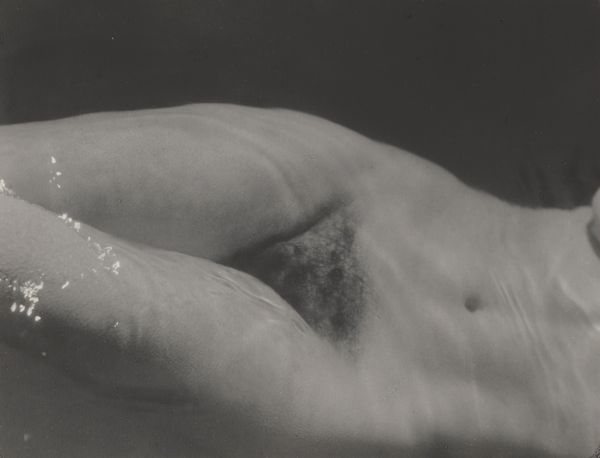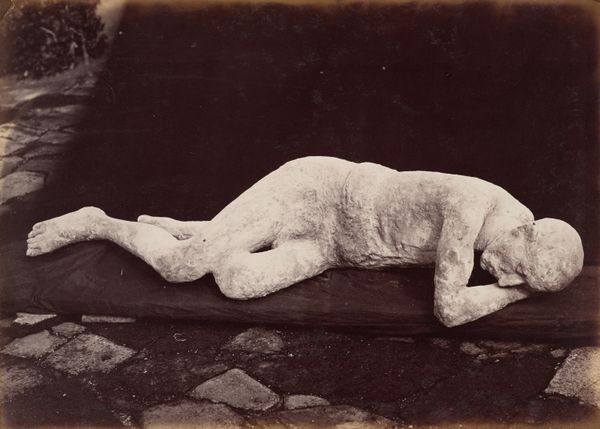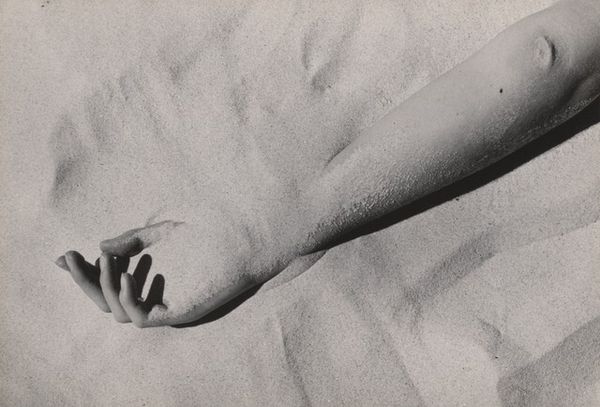
Erinnerungsspur--Statische Vibration (Memory's Trace--Static Vibration) Possibly 1978 - 1979
0:00
0:00
photography
#
landscape
#
photography
#
body-art
#
monochrome
#
realism
#
monochrome
Dimensions: image: 39.3 x 29.3 cm (15 1/2 x 11 9/16 in.) sheet: 40.5 x 30.7 cm (15 15/16 x 12 1/16 in.)
Copyright: National Gallery of Art: CC0 1.0
Curator: My gut reaction is... wow, it feels ancient, like a newly unearthed fragment from some forgotten civilization. It’s textural and evocative. Editor: You've keyed into some interesting elements, and I can certainly see how one might initially respond to Dieter Appelt’s "Erinnerungsspur--Statische Vibration (Memory's Trace--Static Vibration)" in that way. Appelt created this photogravure possibly between 1978 and 1979. Its themes offer an intriguing intersection of body-art and the natural landscape. Curator: Photogravure? So it's a print based on a photograph? No wonder the textures jump out. And the title… Memory's Trace… is that what gives it this impression of timelessness, of residue? Editor: Exactly. I would argue that it delves into the profound interconnections between individual existence and the external world, and asks how identity is formed when interacting with one's surroundings. Appelt often explores these questions through a performance-based practice that challenges the boundary between self and world, but this also suggests a critique of social constraints that force an artificial divide between them. Curator: I definitely see that. There's an… intentional earthiness. Like the body is willingly returning, melding into the landscape. It brings up the notion of fragility. It makes me think about gender, too. Is this raw vulnerability something that affects men and women differently? Editor: These are certainly essential considerations. A critical reading can place Appelt’s work in conversation with second-wave feminism. As such, the image invites dialogue around vulnerability, embodiment, and how art can function as a form of radical self-expression. One thing to consider is the relationship between gendered norms of the period and how they frame the potential meaning-making for the figure, context and viewer. Curator: Absolutely. It's this quiet rebellion. Thanks for bringing that context in. Editor: It's my pleasure! These conversations around Appelt's works should always be open to ongoing evolution as much as Appelt explored his identity through nature and memory. Curator: Yes, the static vibration. That's an amazing tension to end on—the energy and the stillness, existing at once. Editor: Indeed! Let us carry that resonant tension onward.
Comments
No comments
Be the first to comment and join the conversation on the ultimate creative platform.
